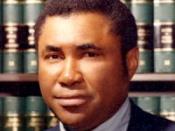In the case of Doe v ZYX Corporation, the plaintiff John Doe accuses his employer of giving a discriminatory test, and that the company dress code is biased against men. The dress code addresses the length of men's hair and not women's. The grooming code allows pieced ears for females but not for males. To prove Doe's claim he must show: disparate treatment, intentional discrimination against a class, or disparate impact. Disparate treatment is overt: for example, the company's policy states that only white males will be promoted. Doe' will have a better chance of proving disparate impact and discrimination against a class. Two resolution methods will be discussed: Alternative Dispute Resolution, and filing a claim with the EEOC. If arbitration agreements are in place, the company will attempt to settle this dispute through Alternate Dispute Resolution (ADR). Employers must have a signed agreement with their employees to use ADR to resolve complaints of discrimination.
Employers must be careful to follow all federal guidelines and should have these agreements reviewed by an expert in employment law. ADR uses three devices to resolve disputes: Ombuds, mediation, and arbitration. Employers use ADR as an alternative to litigation. Employers that do not have signed agreements with employees to use ADR should inform their employees of the right to file a complaint with the EEOC. The EEOC is the federal organization empowered to investigate and resolve complaints of discrimination.
The first device is the Ombuds device: an Ombuds is an employee whose position is respected by management and employees as a trusted individual who can listen to complaints of discrimination and conflicts that arise in the workplace. The Ombuds listens to all parties involved and tries to resolve the conflict in a fair manner before outside agencies become involved. The Ombuds should...


